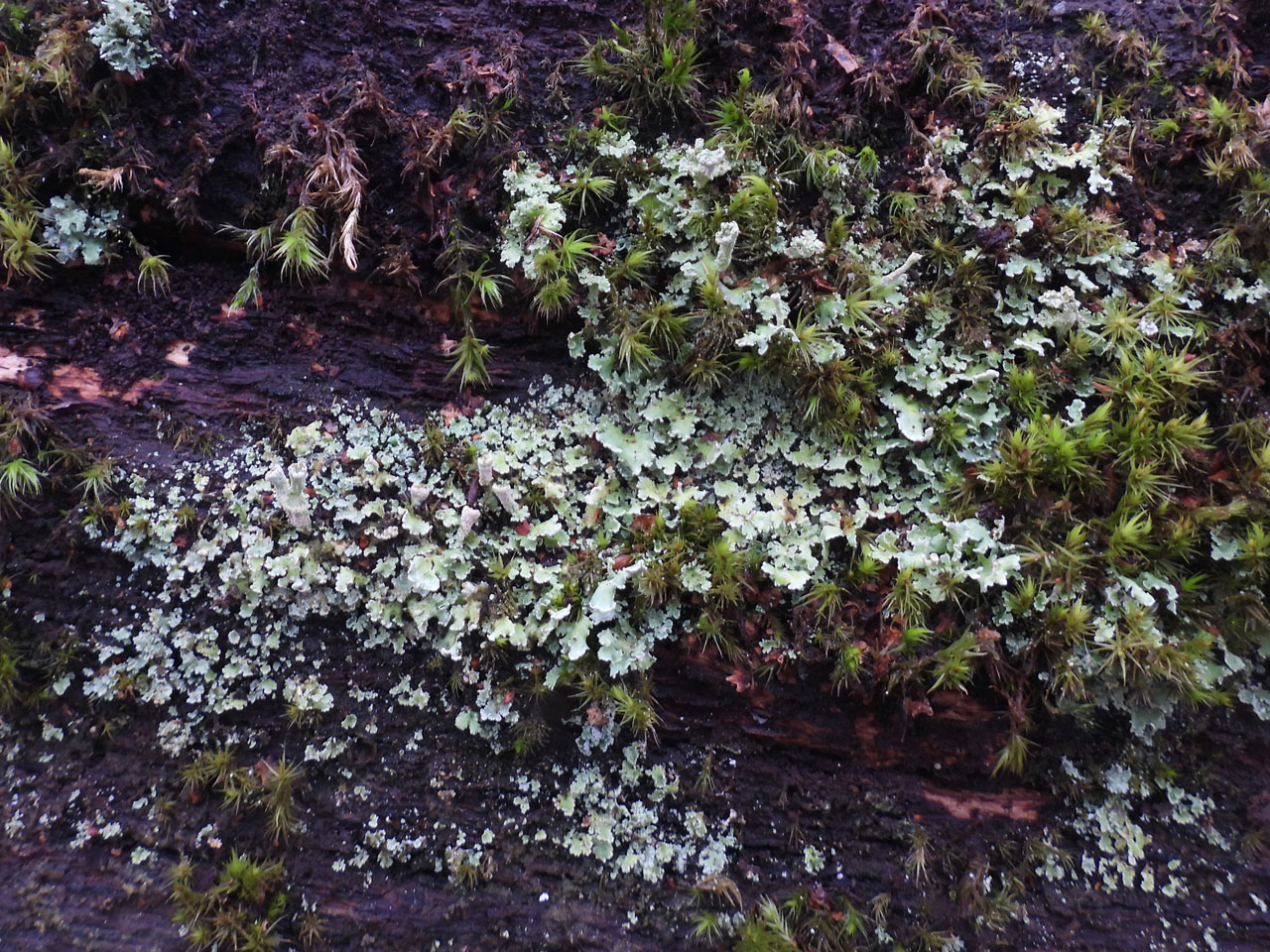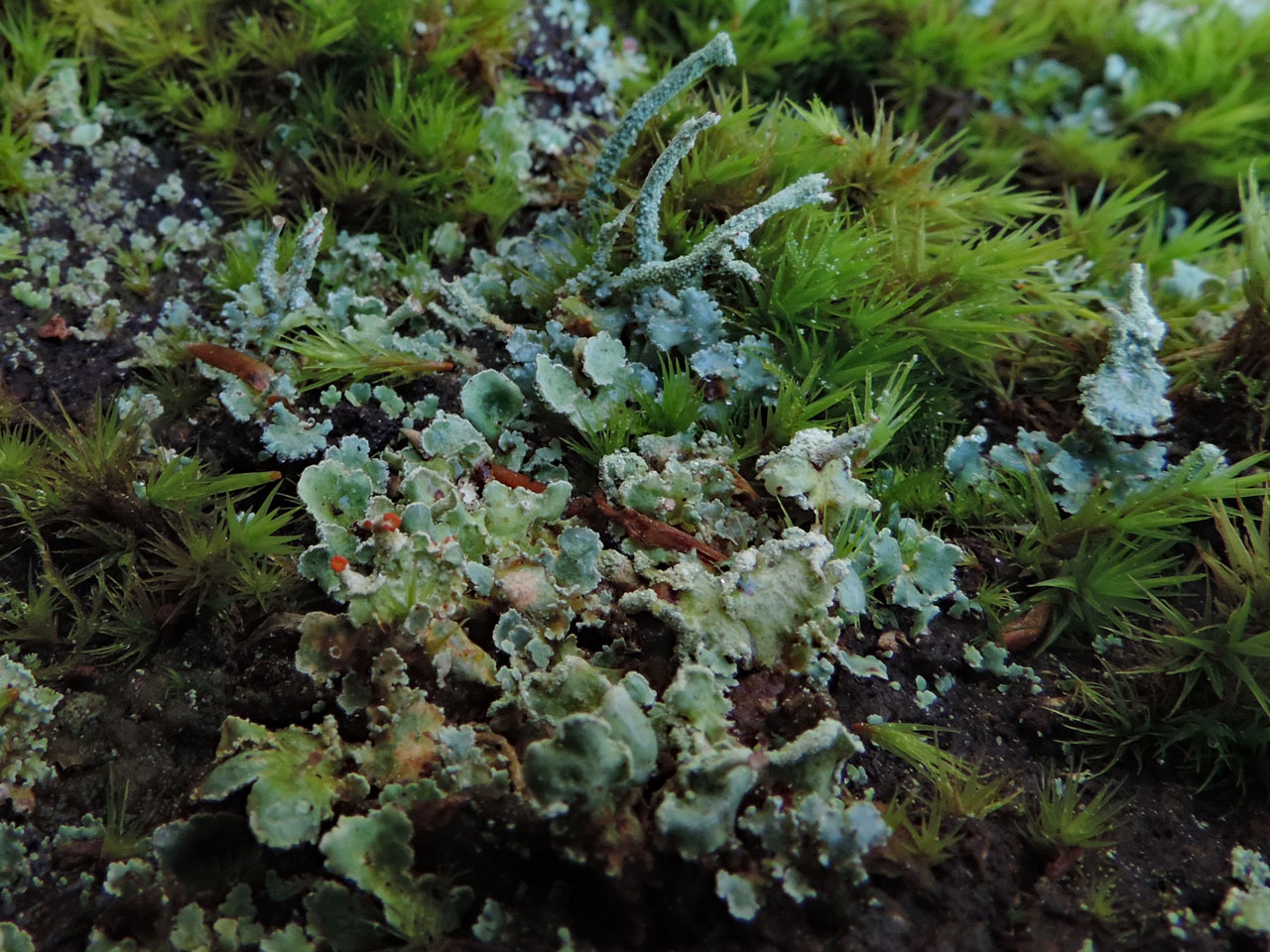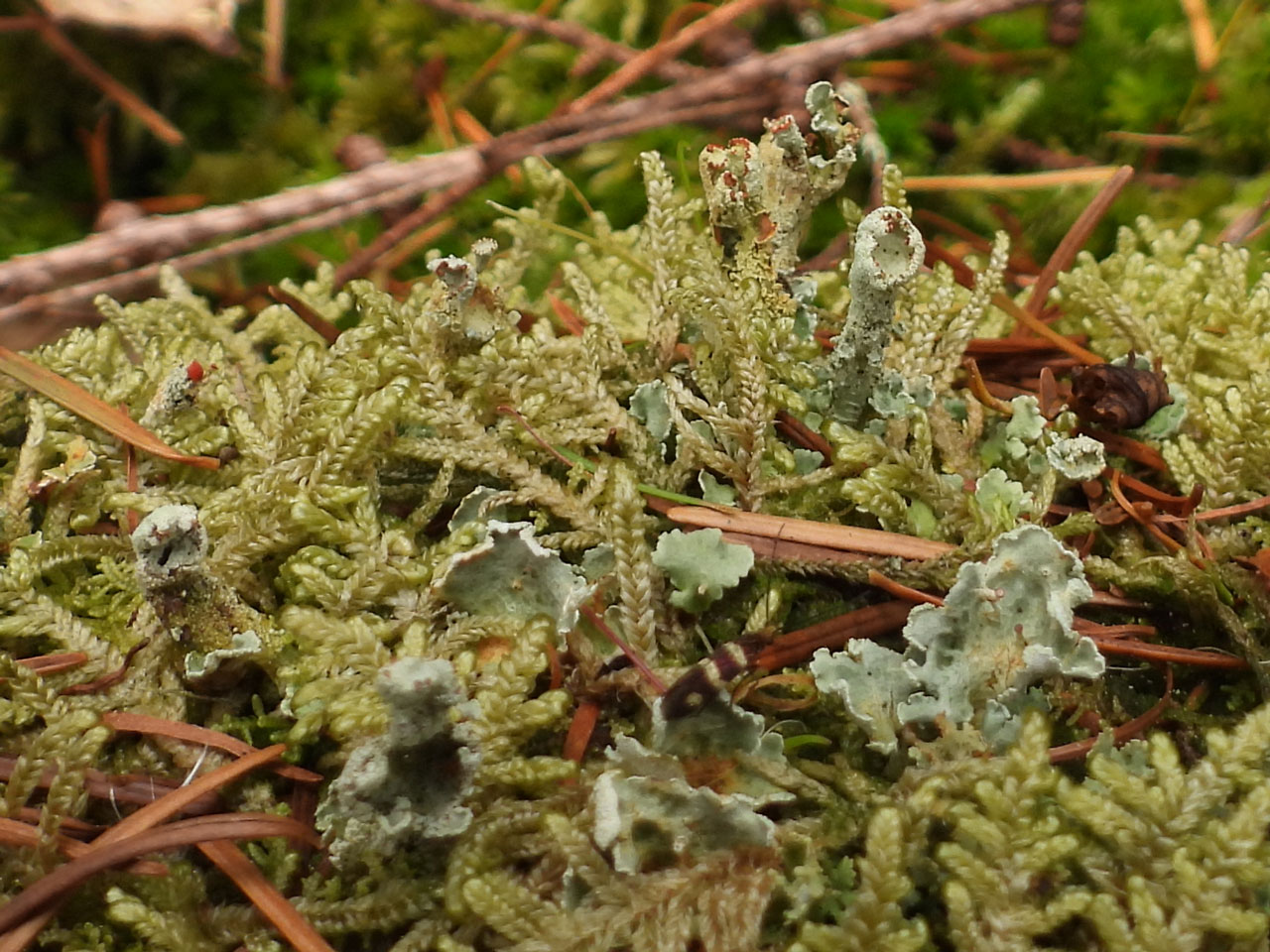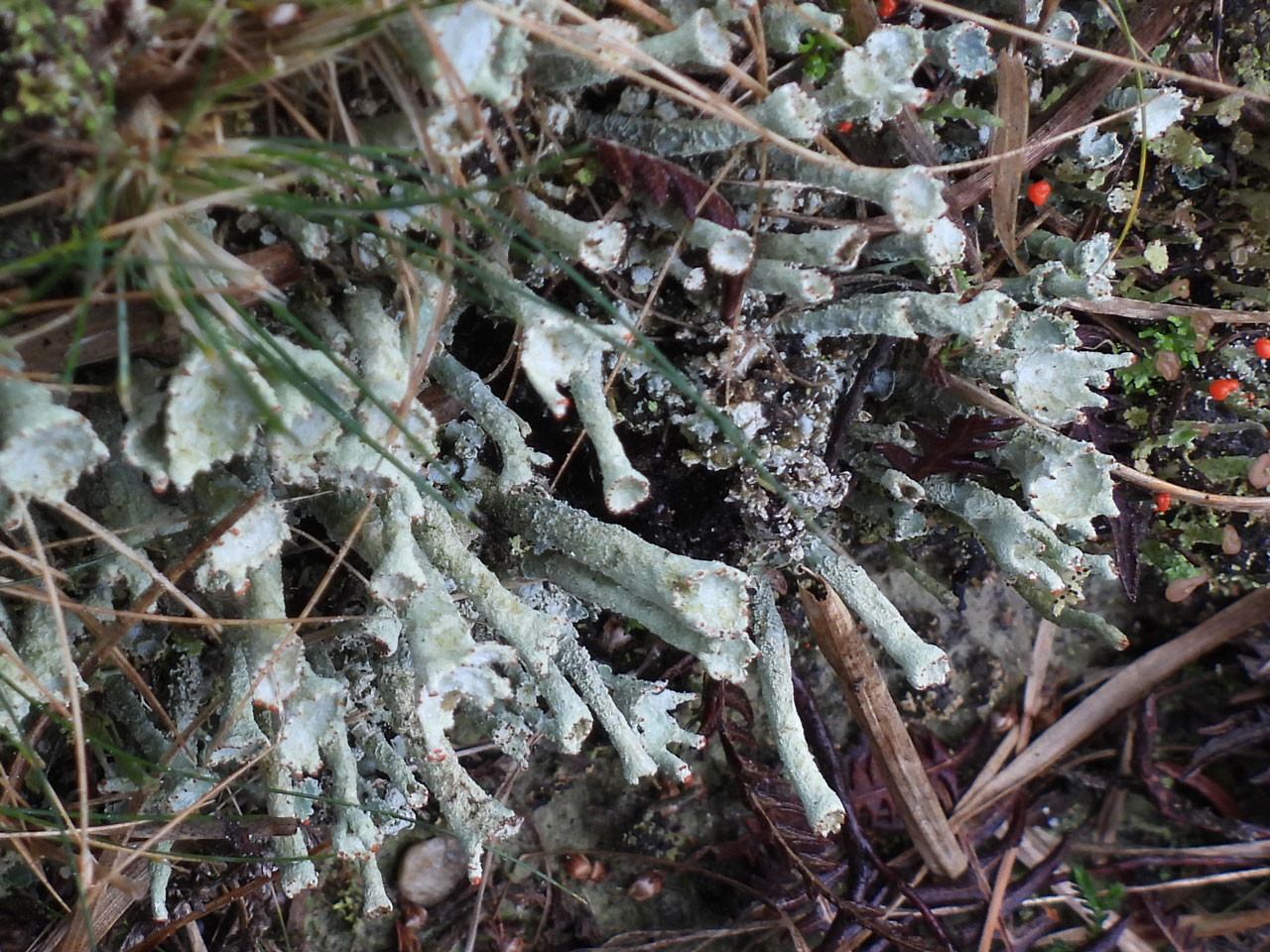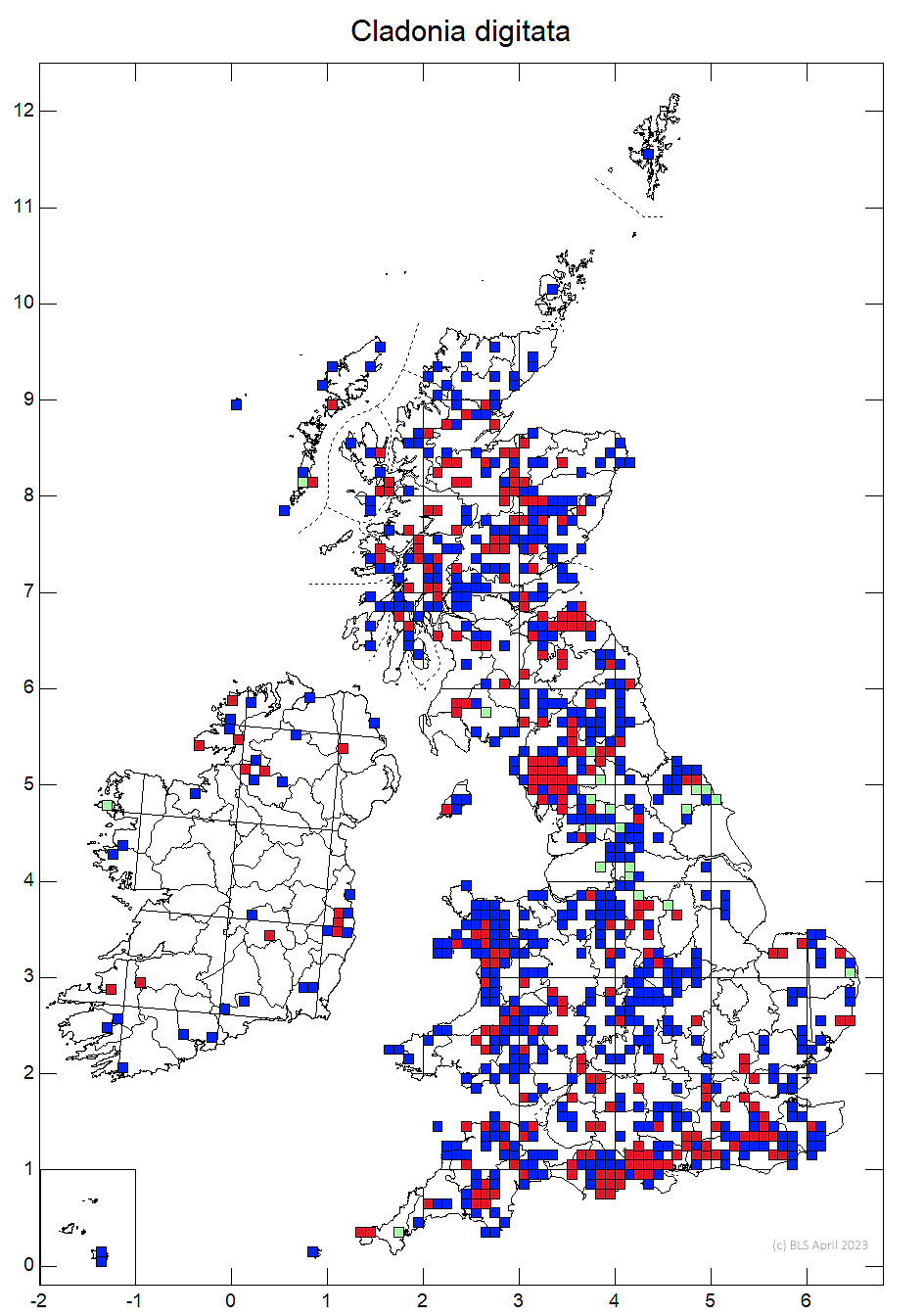Cladonia digitata
A distinctive Cladonia, typically found on deadwood, with large rounded basal squamules with fine soralia the lower surface, with the podetia supporting cups with red apothecia and pycnidia, with finely soredia on the outside but characteristically with a corticate cortex inside the cup. It also has a characteristic K+ yellow spot test. Found mainly on dead wood, rarely on humus and damp rock.
Podetia to 1 cm tall, often ± curved-decumbent, pointed or with irregular, mainly narrow cups which occasionally proliferate from their margins, the surface entirely farinose-sorediate or with a few corticate patches towards the base and also within the cup. Basal squamules to 1 cm diam., often dominant, ± horizontally spreading, often overlapping, ± rounded and entire, scarcely indented, yellowish green-grey above, densely white farinose-sorediate on the lower surface and on the upturned margins, often with a distinct orange tinge (K+ purple) on the lower surface towards the point of attachment. Apothecia and pycnidia red, occasional, at ends of pointed apices or on short projections from margins of cups. Thallus C–, K+ yellow, KC–, Pd+ yellow, UV– (thamnolic acid).
Cladonia polydactyla, may have sparsely sorediate squamules, but has smaller, more incised basal squamules and usually more numerous, erect podetia, which are never corticate within the cup.
When wet the squamules of Cladonia digitata become more yellowish to degree that they resembles a Cladonia coccifera group species in colour. Poorly developed and wet specimens could be confused with Cladonia luteoalba, but this is K– and has a thick cottony-arachnoid lower surface, not a sorediate one.
The squamules in Cladonia incrassata and C. parasitica are often coarsely granular-sorediate, but are much smaller, deeply incised and compacted.
On damp lignum, especially on large fallen trees, and can be frequent in mature woodlands with frequent large diameter fallen dead wood, more rarely on peaty soils in heathland, especially on banks, and on soft damp sandstone; often locally common

Widespread in Britain, but infrequent in less well wooded areas, very localised in Ireland.
Pino-Bodas, R., Sanderson, N., Cannon, P., Aptroot, A., Coppins, B., Orange, A. & Simkin, J. (2021). Lecanorales: Cladoniaceae, including the genera Cladonia, Pilophorus and Pycnothelia. Revisions of British and Irish Lichens 19: 1-45. Link
Text by Neil A Sanderson, based on Pino-Bodas et al (2021)
